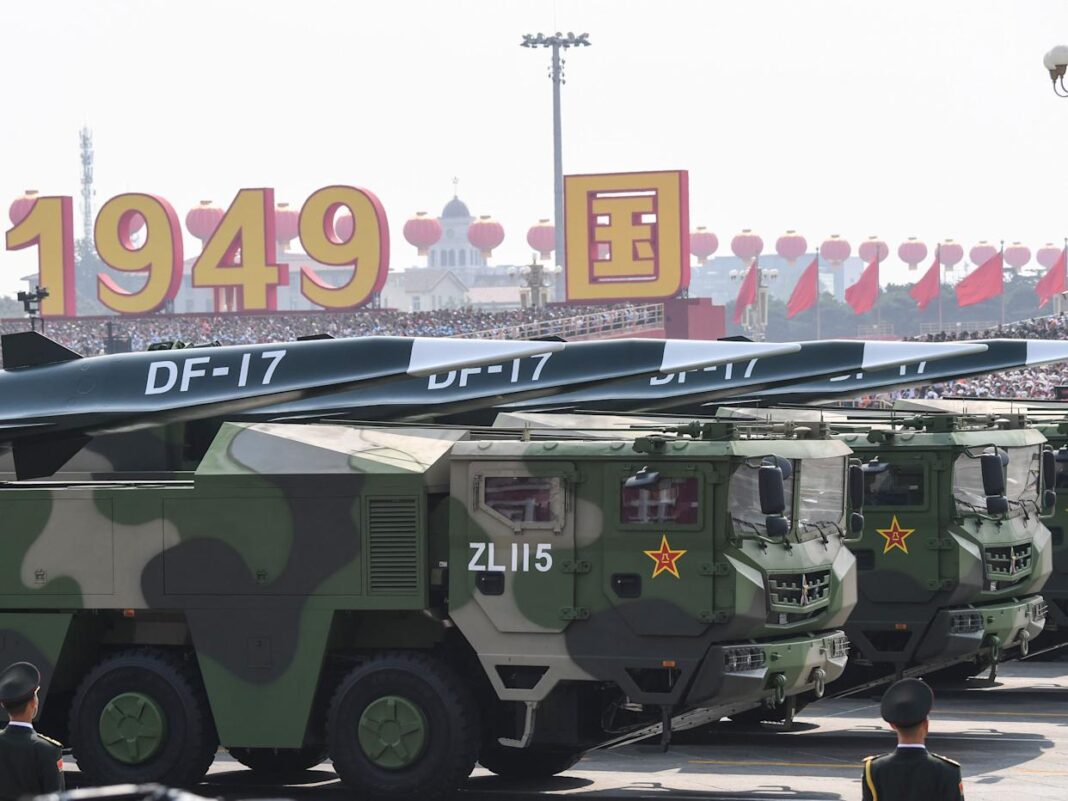The United States has received a powerful new radar system from Raytheon, a company known for developing military technology. This radar is the most advanced of its kind and is being added to America’s defense systems to help detect and track hypersonic missiles. Hypersonic weapons are some of the most dangerous threats in the world today because they move extremely fast, fly low, and can change direction in flight.
The Most Advanced Radar Yet
The radar delivered is an upgraded version of the AN/TPY-2. It uses new technology called Gallium Nitride (GaN), which makes the it more powerful. This allows it to see farther and more clearly than older radars. It can track missiles in different parts of their flight and tell the difference between real threats and other objects in the sky.
This upgraded radar also includes new software called CX6. This software improves how the radar processes the information it sees. It helps the system better identify targets and protects against electronic attacks, which are attempts to confuse or jam the radar signals. Altogether, the new radar combines better hardware and smarter software to increase its ability to defend the country.
Rising Danger from Hypersonic Missiles
Missiles that travel faster than five times the speed of sound are called hypersonic missiles. These weapons are difficult to detect and even harder to stop. They can fly in ways that make it nearly impossible to predict where they are going. This makes current missile defense systems less effective.
Both China and Russia have added hypersonic missiles to their military forces. These weapons are seen as a growing danger to the United States and its allies. Unlike older ballistic missiles, which follow a set path, hypersonic missiles can move around during flight. This makes them harder for radar systems to track and intercept.
The United States has managed to defend against some missiles, like Russia’s Kinzhal, but experts say that true hypersonic weapons—like China’s DF-17 or Russia’s Zircon—are much more difficult to stop. Ukraine has reported stopping a Zircon missile, but it remains unclear how successful those efforts were.
Hypersonic Gamble? Pakistan Says It Took Out India’s S-400—New Delhi Calls It Propaganda
Hypersonic missiles pose a special challenge because of the way they move. They do not simply fly up and come back down like a ball. Instead, they can glide or fly fast and low over long distances. That makes it hard to spot them until it’s too late. For this reason, radar systems that can detect such weapons earlier and more accurately are extremely important.
US Steps Up Its Defenses
The US Missile Defense Agency, which is in charge of protecting the country from missile attacks, is working to improve its systems to deal with the hypersonic threat. The new radar from Raytheon is one of the steps being taken. This radar will help the United States detect dangerous missiles sooner and with greater precision.
This radar is also a part of a bigger effort to build better missile defenses. Raytheon has already started making another system called the Lower Tier Air and Missile Defense System (LTAMDS). It also uses Gallium Nitride technology and is being built to replace older systems like the Patriot radar.
Gallium Nitride technology is changing how systems work. It allows radars to send out stronger signals without overheating, making them more effective and longer-lasting. Several defense companies are working on this type of technology to improve how they detect and track fast-moving objects like missiles.
Falasteen-2 Hypersonic Missile Hits Israel’s Top-Secret Sdot Micha Base in Major Escalation
In addition to this, the US has teamed up with Japan to develop a new system designed to stop hypersonic weapons while they are still in flight. This project focuses on creating a special missile that can intercept a hypersonic threat before it reaches its target. It’s part of a broader move to build layers of defense around the country and its allies.
Also, in a move to protect the homeland, a new defense program is being developed. It was originally called “Iron Dome for America,” and is now known as the “Golden Dome.” This program is being created because high-speed missile attacks—whether ballistic, hypersonic, or cruise—are now seen as one of the most serious dangers the country faces.
These new steps show how seriously the United States is taking the hypersonic threat. The new AN/TPY-2 radar, with its advanced technology and powerful tracking ability, will play a key role in defending the country from missiles that are faster and smarter than ever before.

